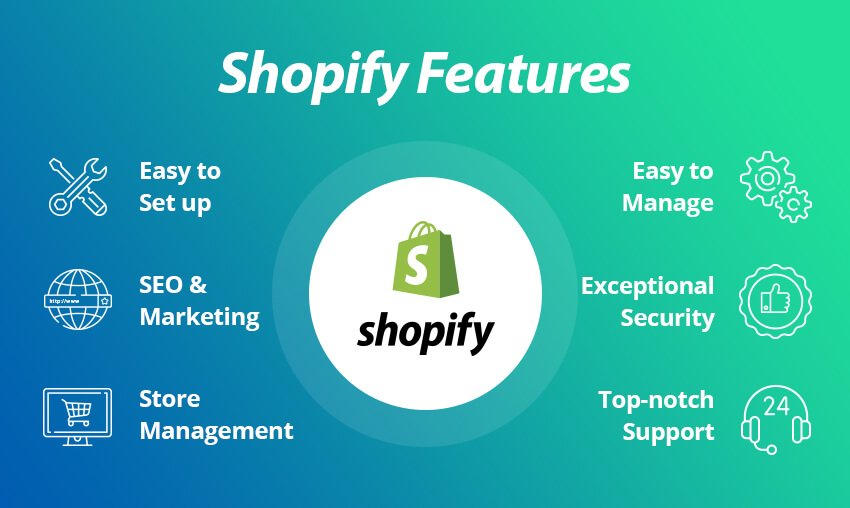Introduction
In today’s digital landscape, establishing an online presence is crucial for businesses aiming to reach a broader audience and drive sales. Shopify stands out as one of the leading e-commerce platforms, offering a seamless solution for creating and managing online stores. Whether you’re a seasoned entrepreneur or a newcomer to e-commerce, this guide will walk you through the process of setting up your Shopify store step by step.

- Choosing a Niche: Before diving into the world of e-commerce, it’s essential to identify your target market and niche. Consider your passions, expertise, and market trends when selecting a product or niche for your Shopify store. Conduct thorough market research to assess demand, competition, and potential profitability.
- Signing up for Shopify: To begin building your online store, visit the Shopify website and sign up for an account. Choose a pricing plan that aligns with your budget and business needs. Shopify offers various plans, each with its features and benefits tailored to different business sizes and requirements.
- Setting Up Your Store: Once you’ve signed up for Shopify, you can start setting up your store by following these essential steps:
- Choosing a Domain Name: Select a memorable and relevant domain name for your store. You can either register a new domain through Shopify or connect an existing domain.
- Designing Your Store: Explore Shopify’s collection of professionally designed themes and choose one that aligns with your brand and aesthetic preferences. Customize the theme to reflect your brand identity by adding your logo, colors, and images.
- Adding Products: Upload product listings to your Shopify store, including images, descriptions, prices, and inventory levels. Organize your products into categories and collections to make it easier for customers to navigate your store.
- Setting Up Payment Gateways: Configure payment gateways to accept online payments from customers. Shopify integrates with various payment processors, including PayPal, Stripe, and Shopify Payments, to securely process transactions.
- Configuring Shipping Settings: Define shipping rates, methods, and zones to ensure smooth order fulfillment. You can set up shipping options based on weight, destination, or flat rates, depending on your preferences.
- Optimizing SEO: Enhance the visibility of your Shopify store by optimizing it for search engines. Customize meta titles, descriptions, and URLs for your product pages to improve organic search rankings and attract more traffic.
- Testing Your Store: Before launching your Shopify store, thoroughly test all functionalities, including checkout, navigation, and responsiveness across different devices. Address any issues or bugs to ensure a seamless customer experience.
- Launching Your Store: After completing the setup process and testing your store, it’s time to launch! Announce the grand opening of your Shopify store through your website, social media channels, and email marketing campaigns. Offer special promotions or discounts to incentivize customers to visit your store and make their first purchase.
- Marketing and Promotion: Once your Shopify store is live, focus on driving traffic and generating sales through strategic marketing and promotion efforts. Utilize various digital marketing tactics, such as social media marketing, email marketing, influencer partnerships, and content marketing, to reach your target audience and drive conversions.
- Monitoring and Optimization: Continuously monitor the performance of your Shopify store using built-in analytics tools and third-party apps. Track key metrics, such as traffic, conversion rate, and average order value, to identify areas for improvement and optimization. Experiment with different marketing strategies, product offerings, and website optimizations to maximize your store’s potential.
Hostinger: Your gateway to reliable web hosting, offering blazing fast speeds, top-notch security, and 24/7 expert support. Sign up now through this link “https://bit.ly/4b09hA2” to unlock a 20% discount on your hosting plan!
Conclusion
Creating a successful Shopify store requires careful planning, execution, and ongoing optimization. By following this comprehensive guide, you can build a professional and profitable online store that attracts customers, drives sales, and grows your business. Stay informed about industry trends, customer preferences, and technological advancements to stay ahead of the competition and achieve long-term success in the world of e-commerce.
Also Read
Understanding Google AdSense’s Transition to the eCPM Payment Model

